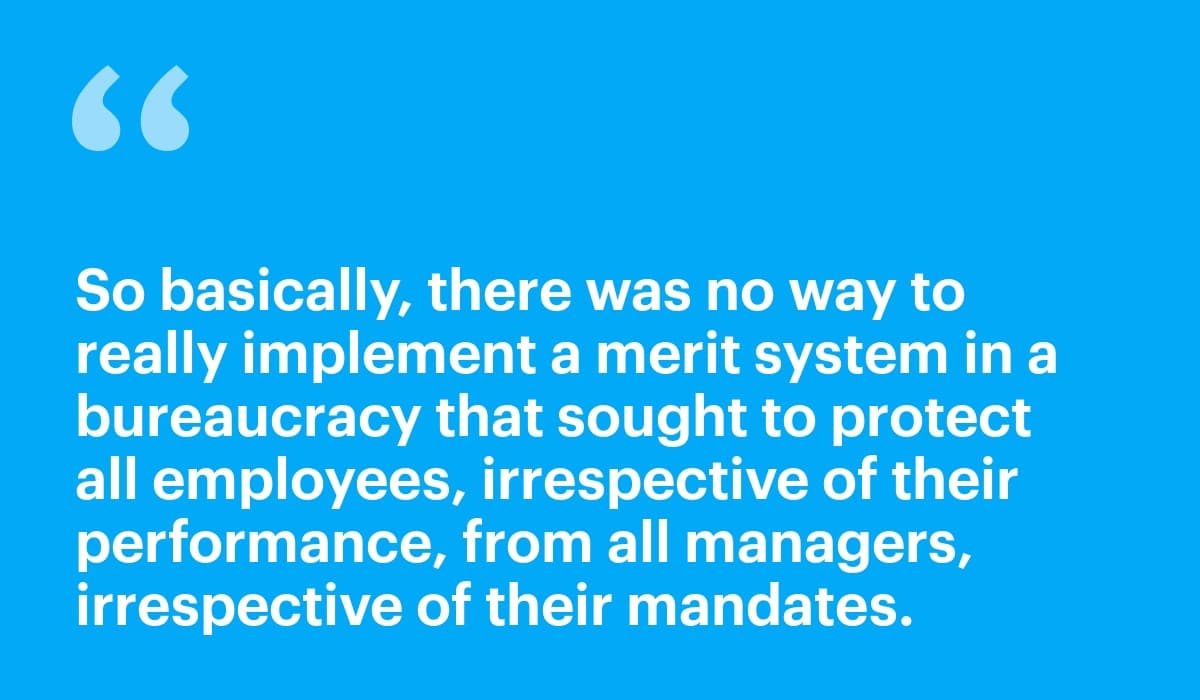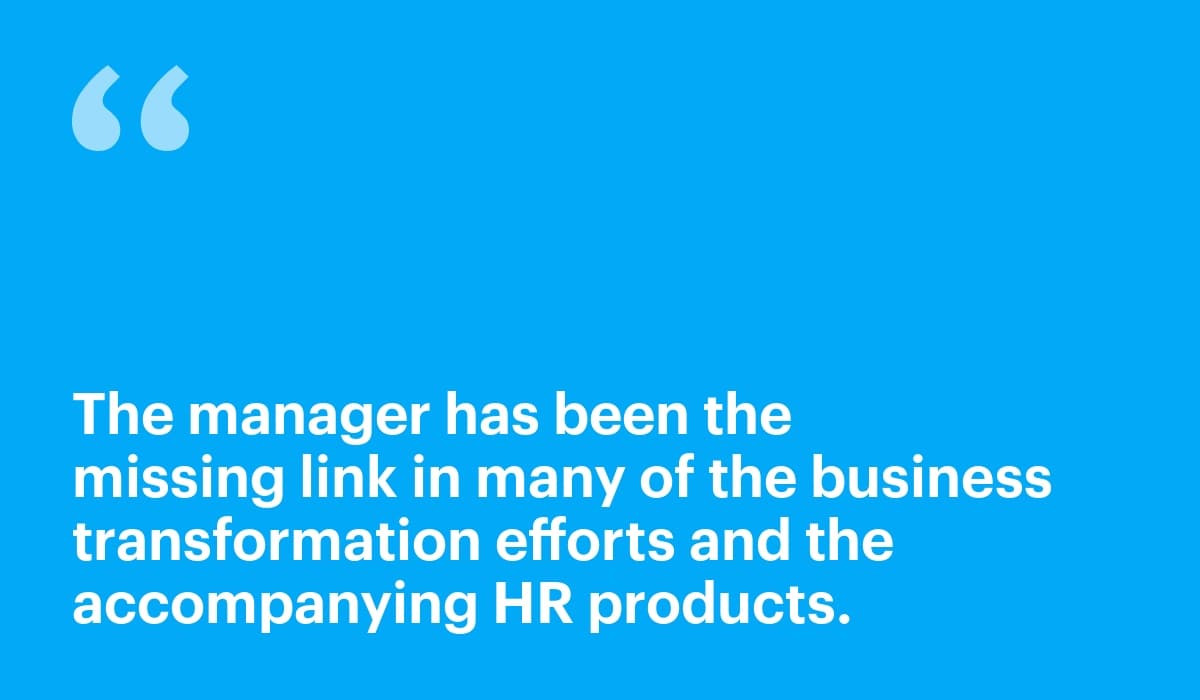Notes From the People Cloud | People Managers are Becoming a Rare Breed
Please insert description

People managers hold a team together, but becoming a better manager takes more skills than many possess. About 16 years ago, I took a job as the Director of Labor Market Information for the state of New Jersey. It was one of the hardest things I have ever done in my life. I led a department of 65 people and oversaw 10 federally mandated programs. My department was responsible for publishing all monthly employment and employment statistics for the state of New Jersey, as well as quarterly industry data, bi-annual occupational data, population and employment projections, and field-based data dissemination and communication teams.
Youngest employee in a tough job
I already felt intimidated by the role and title. I suspected I was among the youngest people and found out that I was the second youngest of 65 people. Even before the start date, my supervisor shared details on our deliverables and our KPIs. I quickly noticed that New Jersey ranked around the lowest in the nation. I started questioning my decision to take that job. And as a way to reassure me, my supervisor smiled and said, “here is the good news; it can’t get any worse.” Somehow, I found it utterly liberating that even if I have no power to fix any of these issues, I can’t make it any worse. There’s my first win!
A manager’s struggle with low team morale
As I ushered into this relentless (if rewarding) challenge, it was clear how relentless this job can be, albeit quite rewarding. My direct reports were mostly men twice my age, with very deep knowledge of the programs, the bureaucracy, and a manager’s abilities. Morale was extremely low overall. “No one cares, why should I?” was in the oxygen that everyone breathed.
It was hard to make my team feel seen, and even harder to motivate them in a system so focused on equality. One of the most dehumanizing feelings is to think one’s work doesn’t matter. As a manager, I couldn’t really reward or penalize anyone; all I could do is make my teams know their work and output is seen.
To combat this, we created a system of accountability. where possible, we created a manual tracking system to track the output of each and every person. This helped instill a sense of friendly competition and pride. We bought coffee and bagels to celebrate milestones together.
The inherent weakness of performance reviews
My daily tasks involved celebrating wins and writing memos to document unacceptable behavior—knowing full well these memos could do nothing but state what is acceptable or not.
I couldn’t give anyone an “exceptional” review without being prepared to write very long justifications. I couldn’t fail any one on the performance review, without a very long legal process. Even those who needed to fail a performance review couldn’t do so until after two review cycles with clear developmental plans. So basically, there was no way to really implement a merit system in a bureaucracy that sought to protect all employees, irrespective of their performance, from all managers, irrespective of their mandates.

Don’t retire your best employees
I would have been able to deliver at triple the speed if I had a third of the workforce—the right third! During my tenure, and as a result of rising pressure to decrease government headcount, the organization introduced an Early Retirement program. Employees were encouraged to retire even if some didn’t meet retirement and service age.
There was no analysis done on how these retirement programs would impact the ability to deliver. Federal funding was tied to a headcount associated with each program. No analysis was done on who is more likely to take advantage of the package. The harder a person worked in a system that didn’t differentiate between employees based on merit, the more likely they were to retire. So the headcount was reduced by about 10% in my department, but that 10% were responsible for a good 40% of all deliverables. In retrospect, I can now say, “I wish I had Visier.”
A perfect hire (on paper)
After a very long battle to justify an exception to the hiring freeze, I was able to get approval for a single data scientist to automate various processes and help the department meet our federal mandates. The process took almost a year until I finally found the right person, a person that looked perfect on paper.
The person decided to resign within a couple of months.
At the time, this totally caught me off guard. I was upset, and shocked. But the data could have easily predicted the outcome. Data today can predict probability of successful onboarding and retention, even the probability of resignation over time for a given candidate. Imagine all the resources that we invested only to lose our new hire in a couple of months. Again, in retrospect, I can say, “I wish I had Visier.”
My secret data weapon
However, the overall performance of the department improved significantly. Within 18 months, we met 100% of the KPIs. How? What I lacked in experience, I was able to offset by a very special secret weapon: data and analytics.
I am a data wrangler at heart, and I also happen to be a data hoarder. I instinctively used all my data powers to gather an inordinate amount of data from disparate systems, and I harnessed my data powers to synthesize HR and business data in a way to communicate to each and every member of my team. From Head of Program to entry level analyst knew that I saw them and held them accountable. The data alerted me to every hit and miss. We celebrated the wins and talked openly about the losses.
What about managers who aren’t data scientists?
But how many managers are data scientists? My experience made me appreciate the difficulty of management. The majority of managers are expected to fly blind. They are given targets and deliverables with zero input on people data that is so critical to meet their goals. There were many nights I spent analyzing data and creating my home-made people analytics system (that term didn’t even exist then) when I was completely baffled that this data was not readily available to me.
Building and analytics practice
As I transitioned to a new role with Burning Glass (now called Lightcast), I was supposed to build an analytics practice and a brand new team. I remember my anxieties about managing. My supervisor trusted me 100%, I could hire and fire freely, and I was in a position to shape the culture and entire mode of operation quite freely. And yet, I wanted to savor my newly acquired individual contributor status for as long as I could. I knew what it took to manage a team, to inspire them, to mentor them to become leaders, and do all that while delivering on company-wide goals and key results.
Eventually I built a multi-national team that stretched across the globe. I had the lowest resignation rate in the company. Because we were a start-up company without a formal HR practice, I built an in-house people analytics practice that seamlessly synthesized operational and people data. It became a no-brainer to me that people data needs to reach beyond the formal HR systems and get into the hands of managers for organizations and people to thrive.
And I am now one of so many managers choosing to turn in the manager gears to become individual contributors. According to Visier’s People Benchmarks, the ratio of managers to total employees went down from 23.6% in Q4 2019 to 17.6% in Q1 2022. That is, before the pandemic, a manager was managing a team of four, and now that went up to six. For female managers, the drop is even bigger, from 23.3% to 16.8% during the same period.
New manager challenges
While some of what I shared may be specific to a time and an organization culture, the challenges that a manager faces today are even more acute. Business transformations create wide-scale process re-engineering and widening skill gaps. Both of these added a lot more pressure on the manager. At the very same time, the pandemic completely transformed the way of work; remote work increased the demand for coaching, up/re-skilling, and targeted career development.
We know that overall productivity went up for the majority of enterprises—in fact hybrid work resulted in greater revenue for the vast majority of enterprises. However, the manager has to meet all these deliverables while their teams are walking out in droves. Managers are quitting too, leading to deeper fragmentation in teams that are becoming bigger and less coherent. These managers needed to learn and train on new processes daily, and they have been almost completely forgotten in the employee engagement and enablement tools and processes. No wonder managers, particularly middle managers, are becoming rarer today.
Reimagining the future of management
I have been dismayed by the “either/or” approach in most HR product offerings today. Frequently, the product is entirely a command and control, with middle managers seen as an obstacle to circumvent. Digitization and the creation of digital platforms are seen as ways to communicate values, needs, and deliverables, without the need for the manager. Other products focus entirely on the agency of the employee, and empower the employee to steer their own career development and skill paths irrespective of the manager. All these products undermine the role of the manager.

The manager has been the missing link in many of the business transformation efforts and the accompanying HR products. Managers need help revealing blind spots due to burgeoning workloads. They don’t need more data, they are already drowning in data, but need to see risks and opportunities in simple and timely ways. Here are examples:
“These two projects are at risk because people working on them may leave. Let’s simulate some actions and results.”
“This operation is going to be below capacity because of rises in predicted sick and vacation time off, here are some options.”
“[John Smith] hasn’t been promoted since 2020, and his burnout score is going up. Here are some suggested pathways and team restructuring scenarios to consider.”
We are asking the managers for a lot more while giving them far fewer resources. The only way for managers to be able to meet the rising needs is to power them with tools that synthesize people and operations data, and allow them to clearly see risks and opportunity costs proactively. Simply put, we need to close the People Impact Gap and that’s why Visier has launched People Cloud by Visier.

Read our report to learn how better access to people data can help you achieve better business outcomes.
On the Outsmart blog, we write about workforce-related topics like what makes a good manager, how to reduce employee turnover, and employee burnout. We also report on trending topics like the Great Resignation and preparing for a recession, and advise on HR best practices like how to present headcount data to your CEO, metrics every CHRO should track, and connecting people data to business data. But if you really want to know the bread and butter of Visier, read our post about the benefits of people analytics.
Get Outsmart content straight to your inbox
Subscribe to the People Insights Monthly newsletter for actionable insights and stories.
Subscribe now